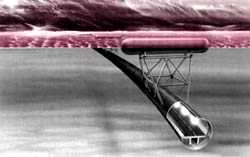The Circularity Gap Report Norway
<p>The Circularity Gap Report Norway is an in-depth analysis of how Norway consumes raw materials—metals, fossil fuels, biomass and minerals—to fuel its societal needs. Currently, 97.6% of
<p>The Circularity Gap Report Norway is an in-depth analysis of how Norway consumes raw materials—metals, fossil fuels, biomass and minerals—to fuel its societal needs. Currently, 97.6% of
best space songs
norway's plan to increase coal mining from Arctic Svalbard has invited the ire of environmentalists. The greens say that coal is the most polluting source of power and can wreak havoc on the

It took just five votes to shake the very edifice of the International Whaling Commission IWC . Voting 25 20 in favour of setting up a controversial committee, the North dominated anti whaling faction drastically altered the IWC mandate from that of sc

Submerged floating tunnels could soon be used for transport across deep water channels in Europe

A doomsday vault is being built in the Arctic. Scientists expect the project will safeguard crop diversity in the event of a global catastrophe. Located on the remote Svalbard Island, roughly

Russia recently imposed a ban on salmon imports from Norway from January 1, 2006. Moscow cited dangerously high levels of lead and cadmium in the fish and inadequate Norwegian monitoring system, as
Halfway between the northern coast of Norway and the North Pole in an archipelago called Svalbard, three enormous caverns have been blasted 130 m into the permafrost. Called the doomsday vault, it will be a Noah's Ark of food in the event of a global catastrophe. Among the world's 45,000 most important seeds stored in this Svalbard Global Seed Vault, there will be quite a bit of India too. Seeds of sorghum, pearl millet, chickpea, pigeonpea, groundnut and six small millets will be transferred by the International Crops Research Institute for the Semi-Arid Tropics (ICRISAT) from its headquarters in Patencheru, near Hyderabad to this location, 1000 km from the Arctic. William Dar, Director General of ICRISAT, is at Svalbard for the opening celebrations tomorrow. He will join European Commission President Jose Manuel Barroso and Nobel Peace Prize-winning environmentalist Wangari Mathai in this global initiative. Norway is footing the $8.9-million bill for building the Arctic archipelago where, ironically, no crops grow. Secured behind an airlock door, the three airtight chambers can house duplicates of samples from the world's more than 1,400 existing seed banks. The Norwegian archipelago was selected for its inhospitable climate as well as its remote location. The seeds of wheat, maize, oats and other crops will be stored at a constant temperature of minus 18 degrees Celsius, and even if the freezer system fails, the permafrost will ensure that temperatures never rise above 3.5 degrees Celsius below freezing. This project is important as some of the world's biodiversity has already disappeared, with gene vaults in both Iraq and Afghanistan destroyed by war and a seed bank in the Philippines annihilated by a typhoon. Seed banks have begun contributing: potato seeds from Peru; 30,000 samples of different beans from Colombia; 47,000 seed samples of wheat and 10,000 types of maize from Mexico and thousands of rice varieties from Philippines. Pakistan and Kenya, both wracked by serious unrest, have sent seed collections too. By the time of the inauguration on Tuesday, the Svalbard Global Seed Vault will hold some 250,000 samples, which will remain the property of their countries of origin. According to Dar, ICRISAT's participation adds a special significance to the project
Late last month the Svalbard Global Seed Vault opened in Longyearbyen, on the Norwegian island of Spitsbergen.
The 'Doomsday vault' buried in the Arctic ice will provide a backup for the world's seeds. But more needs to be done to safeguard food diversity.